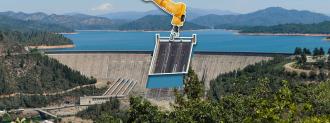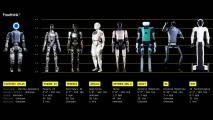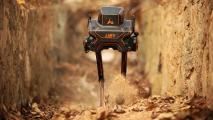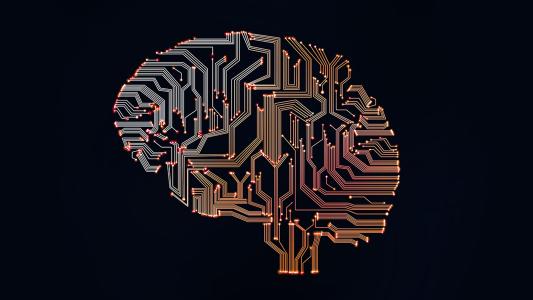A Japanese construction company plans to build a dam almost entirely with robots. But, rather than merely robots taking over jobs, the goal is finding a solution to the country’s labor shortages and aging workforce.
Japan is facing a critical labor shortage due to the country’s low birth rate and an aging society. Last year they passed new legislation to attract foreign workers — a controversial bill, given the nation’s historically strict immigration policies. But the construction contractor Obayashi is taking the matter into their own hands, by automating the workforce — with construction robotics.
This year, they broke ground on a concrete dam built entirely by construction robots. While there will be some human supervisors, every stage of the construction process will involve robots taking over jobs with automation technology.
Besides building a single dam, their goal is to test whether or not a fleet of robots can accomplish such a feat without the sweat labor of humans, according to Nikkei Asian Review.
The project site is in the south-east corner of Japan’s main island, in the Mie Prefecture. Dams are commonly built away from populated areas, making them ideal projects to test the effectiveness of automated robots taking over jobs that may be risky to passersby.
Obayashi created fully automated construction bots, which stack the concrete layers that form a dam. They will task the robots with pouring concrete, maneuvering the cranes, and building the foundation. Their human helpers will step in only when necessary to avoid mistakes. By 2023, they plan to complete a structure that is 84 meters high and 334 meters wide — nearly the size of 5 football fields.
By transferring expert techniques to machines, we’re able to analyze what was once implicit knowledge.
Akira Naito
“By transferring expert techniques to machines, we’re able to analyze what was once implicit knowledge,” Akira Naito, head of Obayashi’s dam technology unit told Nikkei Asian Review.
Dam building is detailed work because every layer of concrete needs to be stacked tightly, and the crevices sealed to avoid breaches. Typically, construction workers brush uneven layers until they are smooth. Robots taking over jobs at Obayashi will have to master this task, too.
Then there is a dance between multiple skilled workers, where they raise concrete forms with heavy machinery, operated simultaneously in a coordinated call-and-response effort. But Obayashi’s robots could eliminate human involvement here, too.
Even though robots will build the dam, employees don’t need to worry about robots taking over jobs, for now. The project still needs the same amount of laborers on-site, although this test could prove that a smaller crew could handle future dam projects. With the increased productivity, it’s possible that Obayashi’s labor force could handle many more projects at once, too.
Obayashi’s isn’t the only Japanese company building construction robots. Kajima has created self-driving dump trucks and bulldozers to keep operations running all day. Some companies are trying to develop robots before their workforce retires, and robots could boost productivity, possibly allowing companies to stay competitive by working 24/7.
These robots could provide a leg-up in the construction industry because Japan plans to reform the industry’s overtime policy in four years — cutting the already slim person-hours even more.
Enter the robots to save the day.
We’d love to hear from you! If you have a comment about this article or if you have a tip for a future Freethink story, please email us at [email protected]





